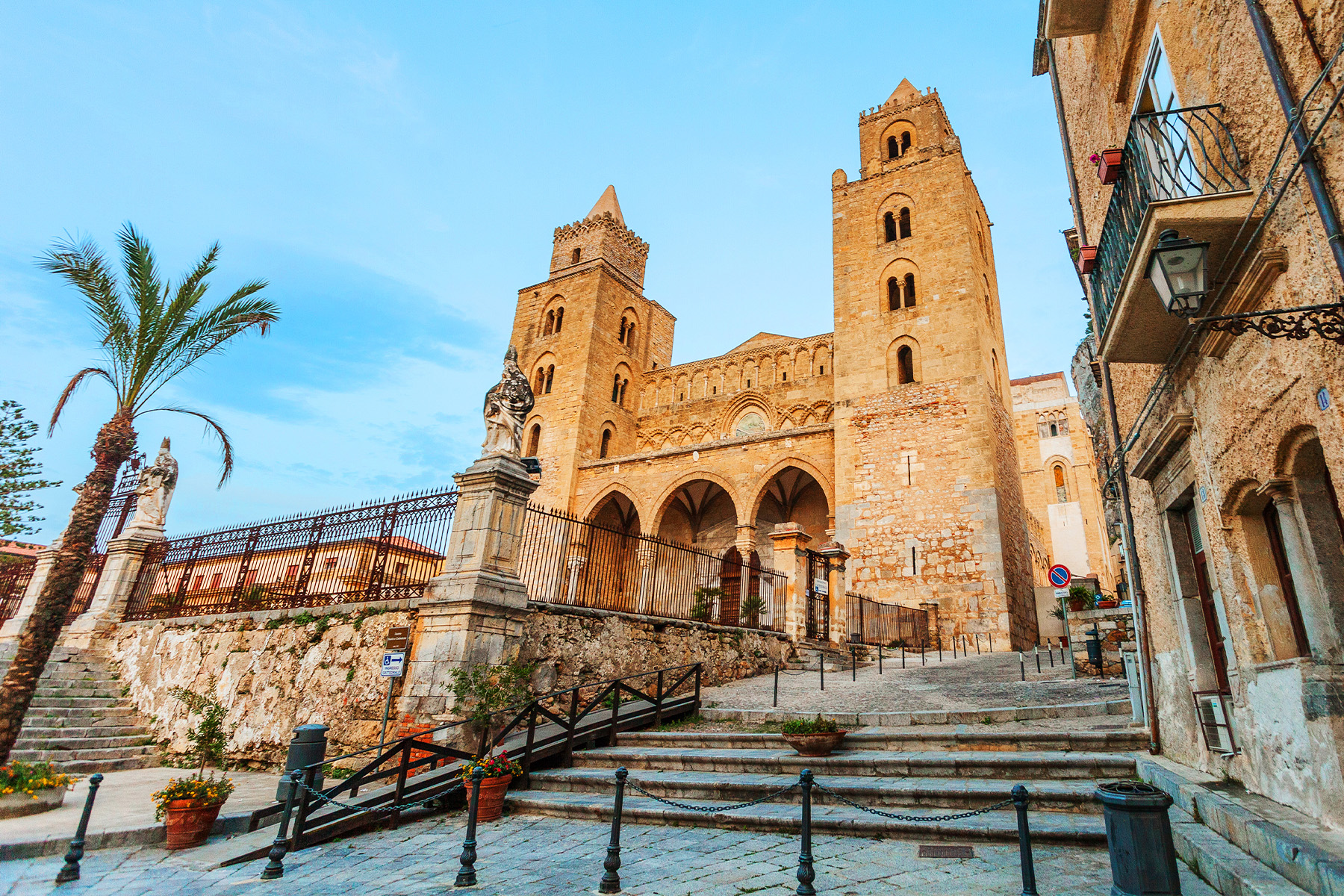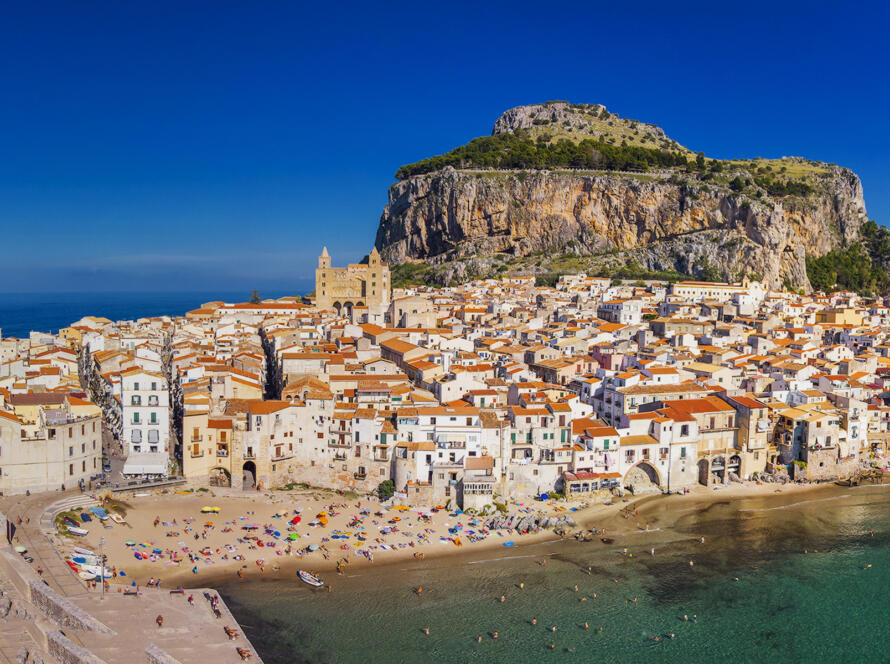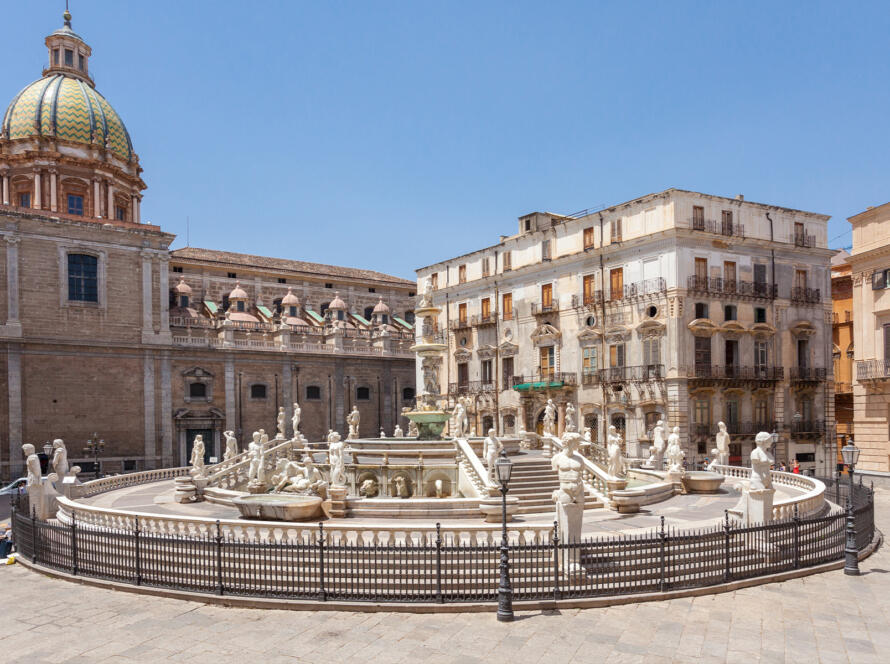Cefalù, a seaside town, is located 70 kilometres from the capital city of Sicily, Palermo.
Every year, Cefalù attracts thousands of tourists in search of the perfect place to spend their summer holidays. Here in Cefalù, almost everyone can find what they are looking for, and specially ensures to young group of people a lot of fun, from the morning until late night.
Located within the Madonie natural park, and elected as one of the most beautiful villages in Italy, the city of Cefalù rises at the foot of a rocky promontory and develops around the iconic Cathedral whose project was planned under the reign of King Federico II. Cefalù offers an immense artistic, cultural, and natural heritage waiting to be discovered.
In Cefalù, there are plenty of opportunities to either explore the outstanding architecture and relevant monuments, or just choose to spend a relaxing day at the beach. Certainly, you cannot miss the chance to taste the delicious local cousine, rich of traditional recipes – both savory and sweet, by the seaside or among the narrow streets of the historical city centre, breathing in the daily life of Cefalù.
For the young ones, there is also no shortage of nightlife entertainment, as there are many nightclubs where you can have fun with your friends until early in the morning!
The places of greatest interest and for which Cefalù is known throughout the world are the majestic Arab-Norman Cathedral, Antonello da Messina’s Ritratto di Ignoto (Portrait of an Unknown Man) in the Mandralisca Museum, the Rocca fortress, and the wash-house where women in medieval times washed their clothes, and, of course, the beautiful sun-kissed beaches with their crystal-clear waters.
Other places of interest are:
BASTIONE DI CAPO MARCHIAFAVA
located next to the Church Itria, standing out against the rocky coastline of Cefalù. Once a strategic defensive element from which sentinels could spot attacks from enemies far away, is now a romantic spot from which to enjoy a breathtaking view of the Cefalù coastline.
To access it, you need to climb up a few steps, but we think you should not miss this peculiar experience.
MEDIEVAL WASH-HOUSE
The public wash house built in the Middle Ages, in the heart of the old town, women used to gather around the artificial tanks of the wash-house to do their laundry – and perhaps even to bathe! The large pools were built on steps made of stone. A lava stone staircase descends into this area under wide arches, where the basins are filled with water flowing from 22 old faucets. At the foot of the staircase, you can spot a very old incision dating back to 1655 made by Vincenzo Auria that says “Here flows Cefalino, more clean than any other river, more pure than silver, colder than snow”.
OSTERIO MAGNO
At the intersection of Via Amendola and Corso Ruggero, which comes straight down from Piazza Duomo (the Cathedral’s square), stands the Hosterium Magnum (i.e. fortified building). This imposing building with double and triple-arched windows was, according to tradition, the residence of the Norman king Roger II in the 14th century. Its two sections date back to different eras. The oldest part of Via Amendola is built of tufa and golden limestone and has two windows; the new square tower is characterised by an elegant mullioned window.




